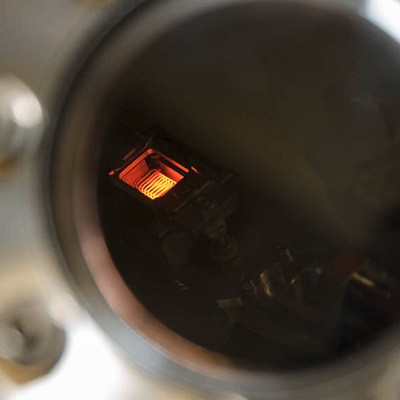
2022-12-06
Visited : 893
A Bath discovery opens a new route for measuring and controlling hot electrons. The hope is that more energy will be available to power solar cells.
A new way of extracting quantitative information from state-of-the-art single molecule experiments has been developed by physicists at the University of Bath. Using this quantitative information, the researchers will be able to probe the ultra-fast physics of ‘hot’ electrons on surfaces – the same physics that governs and limits the efficacy of silicon-based solar cells.
Solar cells work by converting light into electrons, whose energy can be collected and harvested. A hot solar cell is a novel type of cell that converts sunlight to electricity more efficiently than conventional solar cells. However, the efficiency of this process is limited by the creation of energetic, or ‘hot’, electrons that are extremely short lived and lose most of their energy to their surrounding within the first few femtoseconds of their creation (1 femtosecond equals 1/1,000,000,000,000,000 of a second).
The ultra-short lifetime of hot electrons and the corresponding short distance they can travel mean probing and influencing the properties of hot electrons is experimentally challenging. To date, there have been a few techniques capable of circumventing these challenges, but none has proven capable of spatial resolution – meaning, they can’t tell us about the crucial connection between a material’s atomic structure and the dynamics of hot electrons within that material.
Manipulating a target
The researchers from Bath’s Department of Physics studied hot electrons using a scanning tunnelling microscope (STM). This device is designed to image individual atoms and molecules. By injecting a small electrical current (a beam of hot electrons) into a single target molecule, the device can also manipulate a target – moving it, rotating it, breaking a chemical bond or making a new chemical bond.
Atomic manipulation is the ultimate limit of nanoscience and single molecule chemistry. These are the areas of physics that use matter on an atomic or molecular scale to study the electrical, optical, thermal and mechanical properties of materials. To date, atomic manipulation has been used to develop (among other things) molecular machines (where, for instance, a molecule rotates when a current of electrons is applied) and single molecule light emitters (the smallest possible organic light emitting diodes).
Turning science on its head
The Bath scientists, however, have turned traditional experiments on their head. Instead of using a beam of electrons to measure and control what the target molecule does, they have used the molecules to measure what the electrons themselves are doing.
“We have used single-molecule reactions as a probe for the fate of the hot electrons in the first few femtoseconds of their lifetime – before they lose their energy to their surroundings,” explained Dr Kristina Rusimova from the Department of Physics, who led the research.
This work opens a new route for quantitatively and accurately measuring hot electron processes and controlling them. In time, it is hoped that it will feed into the new field of hot solar cells, where the aim is to capture the energy of an electron created in a photovoltaic cell before it has lost energy to its surroundings within the tiny first few femtoseconds of its existence.
The study is published in Nanoscale Advances.
Dr Peter Sloan, the Bath Physics researcher who designed the experiment and constructed the model this research was based on, said: “New understanding of the processes that underpin the fate of elementary charges is among the most important contributions to nanoscience. Molecular nanoprobe experiments open new, previously unexplored ways to look at the behaviour of hot charge carriers at their relevant atomic length scales.”
Dr Rusimova added: “Through state-of-the-art, rigorous and extensive experiment, we have identified the physical mechanism responsible not only for the charge transport across a silicon surface but also for the final manipulation step, where a molecule excited by an electron is ejected from the silicon surface, but crucially only after the hot electron has already lost its excess thermal energy. For the first time, we’ve linked the energy dependence of this manipulation step to the underlying surface electronic band structure.”
Intriguingly, this is also a starting point for designing other more complex materials where it should be possible to control the hot electron transport through, for example, creating defects to deliberately alter the energy landscape of the material, or regulating the material temperature.
The research was funded by the Engineering and Physical Sciences Research Council (EPSRC).
Read the original article on University of Bath.